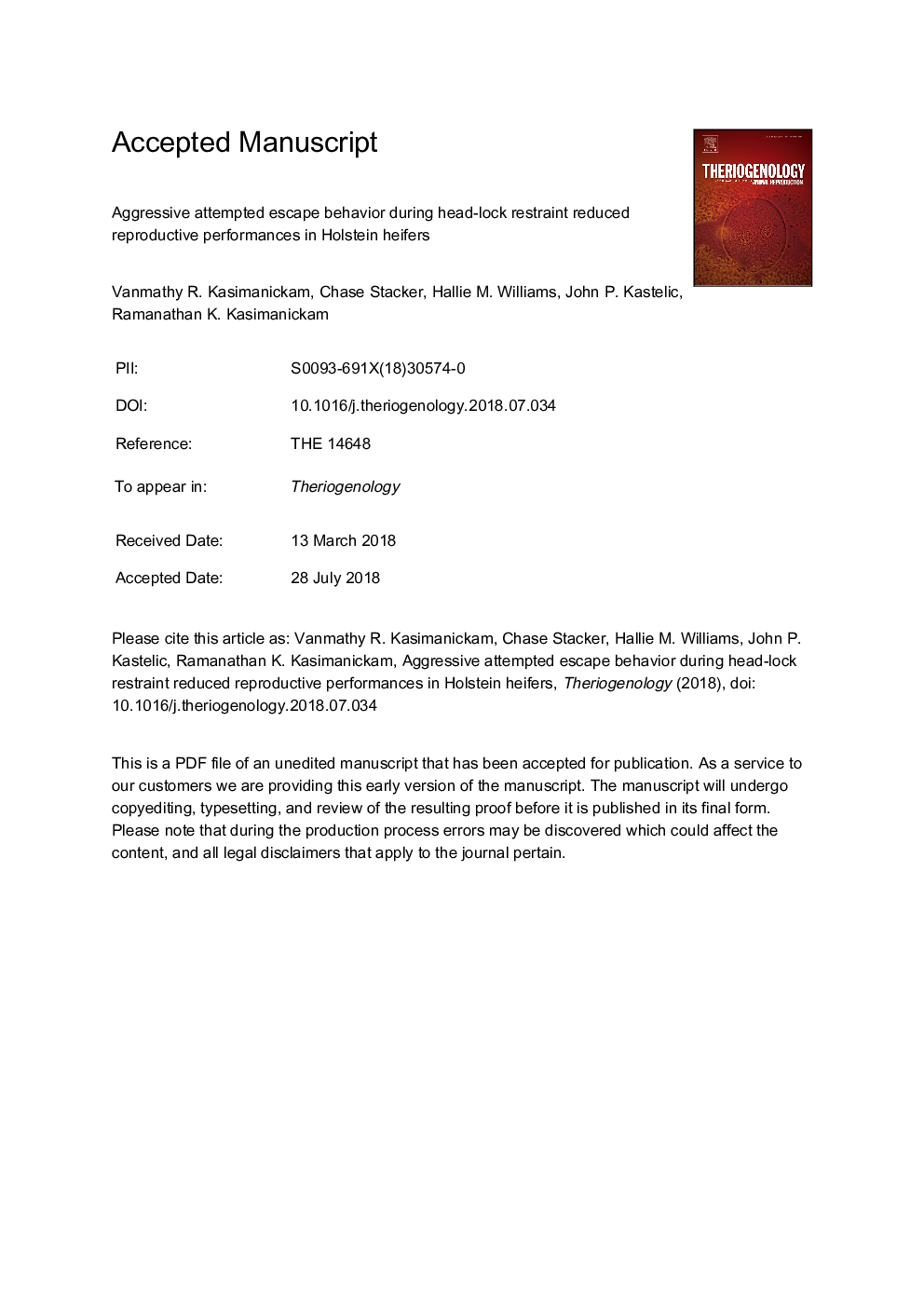| Article ID | Journal | Published Year | Pages | File Type |
|---|---|---|---|---|
| 8943839 | Theriogenology | 2018 | 25 Pages |
Abstract
The objective was to determine associations between behavior during head-lock restraint and reproductive performance in dairy heifers. Behavior of 817 Holstein heifers from four farms was evaluated at feeding (Days 0 and 7) while restrained in a self-locking stanchion. All heifers were assigned a body condition score (BCS; 1, emaciated to 5, obese) on Day 0. Heifers were timed-inseminated on a maximum of three occasions to determine impact of behavior for first service pregnancy per AI (FS-P/AI) and cumulative P/AI (C-P/AI). Ovulation was synchronized with an Ovsynch synchronization protocol for first service and thereafter either Ovsynch and/or prostaglandin F2α-based protocols. More heifers displayed calm escape behavior (Pâ¯<â¯0.05) compared with mild or aggressive escape behaviors (45.2, 28.2 and 26.6%, respectively). Adjusting for BCS (Pâ¯<â¯0.05), FS-P/AI was greater (Pâ¯<â¯0.05) for calm heifers compared with aggressive escape behavior, 58.0% (214/369) vs 48.2% (105/218), with FS-P/AI of heifers with mild aggressive behavior [53.5% (123/230)] intermediate and did not differ from other means. Adjusting for BCS (Pâ¯<â¯0.0001), C-P/AI was greater (Pâ¯<â¯0.0001) for heifers with calm compared with mild or aggressive escape behaviors [84.8% (313/369), 71.3% (164/230) and 64.7% (141/218), respectively]. Serum cortisol concentrations were not different among behavior categories, but serum substance P concentrations were greater (Pâ¯<â¯0.05) in aggressive heifers compared with mild or calm heifers, 97.1â¯Â±â¯4.9, 58.4â¯Â±â¯2.9 and 52.3â¯Â±â¯2.6â¯ng/mL, respectively. In conclusion, Holstein heifers with aggressive escape behavior during head-lock restraint had significantly reduced reproductive performance.
Related Topics
Life Sciences
Agricultural and Biological Sciences
Animal Science and Zoology
Authors
Vanmathy R. Kasimanickam, Chase Staker, Hallie M. Williams, John P. Kastelic, Ramanathan K. Kasimanickam,
